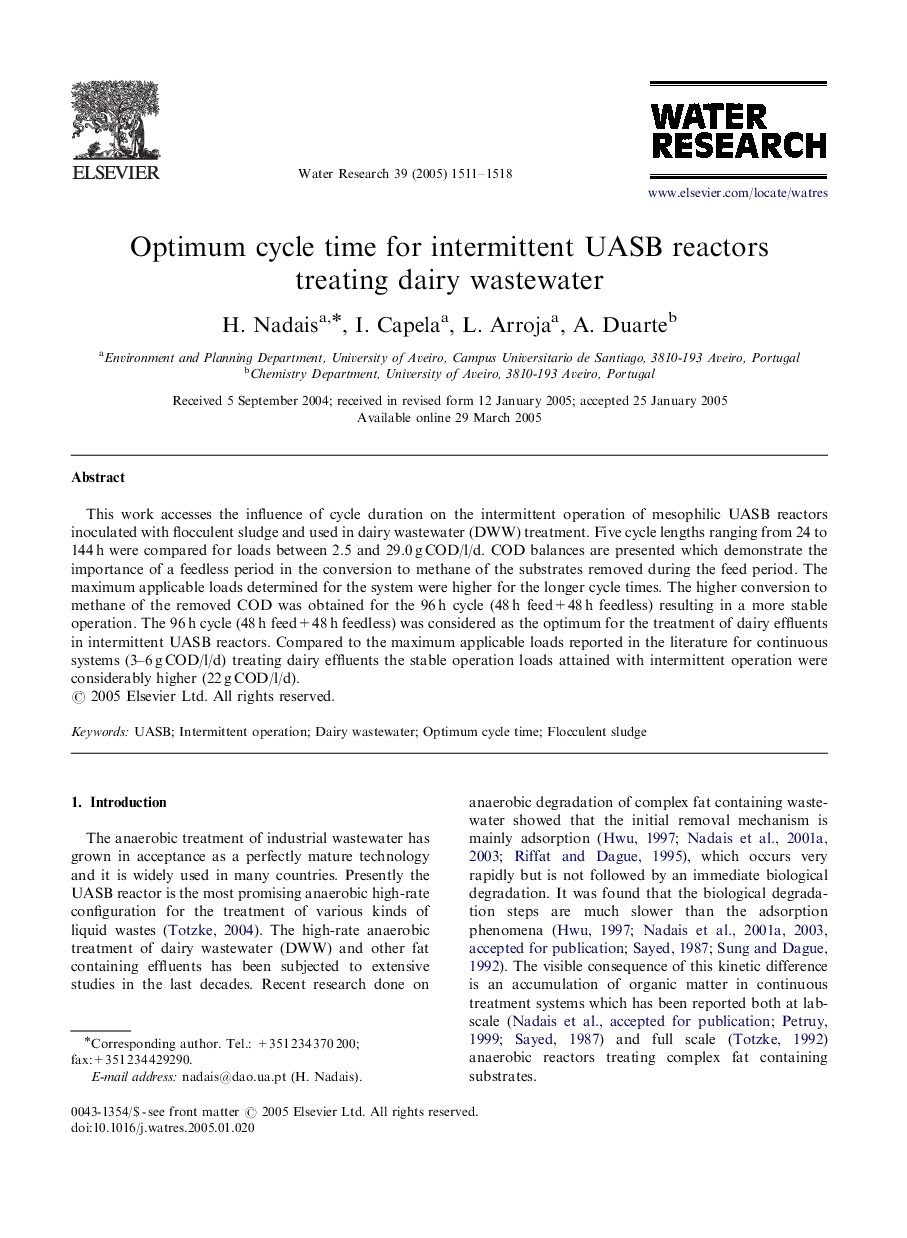| Article ID | Journal | Published Year | Pages | File Type |
|---|---|---|---|---|
| 9468199 | Water Research | 2005 | 8 Pages |
Abstract
This work accesses the influence of cycle duration on the intermittent operation of mesophilic UASB reactors inoculated with flocculent sludge and used in dairy wastewater (DWW) treatment. Five cycle lengths ranging from 24 to 144 h were compared for loads between 2.5 and 29.0 g COD/l/d. COD balances are presented which demonstrate the importance of a feedless period in the conversion to methane of the substrates removed during the feed period. The maximum applicable loads determined for the system were higher for the longer cycle times. The higher conversion to methane of the removed COD was obtained for the 96 h cycle (48 h feed+48 h feedless) resulting in a more stable operation. The 96 h cycle (48 h feed+48 h feedless) was considered as the optimum for the treatment of dairy effluents in intermittent UASB reactors. Compared to the maximum applicable loads reported in the literature for continuous systems (3-6 g COD/l/d) treating dairy effluents the stable operation loads attained with intermittent operation were considerably higher (22 g COD/l/d).
Related Topics
Physical Sciences and Engineering
Earth and Planetary Sciences
Earth-Surface Processes
Authors
H. Nadais, I. Capela, L. Arroja, A. Duarte,
